The Use of Energy Simulations in Residential Design: A Systematic Literature Review
Abstract
1. Introduction
- RQ: “What is the range of applications for energy simulations in residential design?”
2. Materials and Methods
- Studies conducted in the field of architectural design;
- Studies on residential buildings;
- Studies that used computer simulation in energy analysis;
- Studies published in the Web of Science database and written in English.
3. Findings
4. Discussion
4.1. Cluster I
4.2. Cluster II
4.3. Cluster III
4.4. Cluster IV
4.5. Cluster V
4.6. Cluster VI
4.7. Theme 1 Energy Efficiency
4.8. Theme 2 Architectural Design Strategies
4.9. Section Summary
5. Conclusions
Author Contributions
Funding
Institutional Review Board Statement
Informed Consent Statement
Data Availability Statement
Conflicts of Interest
References
- Zhang, M.; Liu, F.; Liu, Q.; Zhang, F.; Li, T. Climate Adaptation Analysis and Comfort Optimization Strategies for Traditional Residential Buildings in Hot-Summer, Cold-Winter Regions: A Case Study in Xuzhou, China. Sustainability 2024, 16, 3411. [Google Scholar] [CrossRef]
- Cangelli, E.; Conteduca, M.; Behnam Kia, E.; Zaiter, H.; Fonti, V. Public Housing Stock between Recovery and Sustainability: The Case of Tor Bella Monaca in Rome. Sustainability 2024, 16, 2510. [Google Scholar] [CrossRef]
- Maskuriy, R.; Selamat, A.; Ali, K.N.; Maresova, P.; Krejcar, O. Industry 4.0 for the Construction Industry—How Ready Is the Industry? Appl. Sci. 2019, 9, 2819. [Google Scholar] [CrossRef]
- Elnabawi, M.H.; Saber, E.; Bande, L. Passive Building Energy Saving: Building Envelope Retrofitting Measures to Reduce Cooling Requirements for a Residential Building in an Arid Climate. Sustainability 2024, 16, 626. [Google Scholar] [CrossRef]
- Zheng, Y.; Chen, T.; Cai, J.; Liu, S. Regional Concentration and Region-Based Urban Transition: China’s Mega-Urban Region Formation in the 1990S. Urban Geogr. 2009, 30, 312–333. [Google Scholar] [CrossRef]
- Nevens, F.; Frantzeskaki, N.; Gorissen, L.; Loorbach, D. Urban Transition Labs: Co-Creating Transformative Action for Sustainable Cities. J. Clean. Prod. 2013, 50, 111–122. [Google Scholar] [CrossRef]
- Anaç, M.; Gumusburun Ayalp, G.; Karabeyeser Bakan, M. A Roadmap for Reducing Construction Waste for Developing Countries. Sustainability 2024, 16, 5057. [Google Scholar] [CrossRef]
- Deng, W.; Cheshmehzangi, A. Eco-Development in China. In Palgrave Series in Asia and Pacific Studies, 1st ed.; Springer: London, UK, 2018; ISBN 978-981-10-8345-7. [Google Scholar]
- Zhao, P.; Zhang, M. The Impact of Urbanisation on Energy Consumption: A 30-Year Review in China. Urban Clim. 2018, 24, 940–953. [Google Scholar] [CrossRef]
- González-Torres, M.; Pérez-Lombard, L.; Coronel, J.F.; Maestre, I.R.; Yan, D. A Review on Buildings Energy Information: Trends, End-Uses, Fuels and Drivers. Energy Rep. 2022, 8, 626–637. [Google Scholar] [CrossRef]
- Heracleous, C.; Michael, A.; Savvides, A.; Hayles, C. A Methodology to Assess Energy-Demand Savings and Cost-Effectiveness of Adaptation Measures in Educational Buildings in the Warm Mediterranean Region. Energy Rep. 2022, 8, 5472–5486. [Google Scholar] [CrossRef]
- Climate Change 2014 Mitigation of Climate Change Working Group III Contribution to the Fifth Assessment Report of the Intergovernmental Panel on Climate Change; Cambridge University Press: Cambridge, UK, 2014.
- Shirinbakhsh, M.; Harvey, L.D.D. Net-Zero Energy Buildings: The Influence of Definition on Greenhouse Gas Emissions. Energy Build. 2021, 247, 111118. [Google Scholar] [CrossRef]
- Zou, Y.; Deng, Y.; Xia, D.; Lou, S.; Yang, X.; Huang, Y.; Guo, J.; Zhong, Z. Comprehensive Analysis on the Energy Resilience Performance of Urban Residential Sector in Hot-Humid Area of China under Climate Change. Sustain. Cities Soc. 2023, 88, 104233. [Google Scholar] [CrossRef]
- Peng, C. Calculation of a Building’s Life Cycle Carbon Emissions Based on Ecotect and Building Information Modeling. J. Clean. Prod. 2016, 112, 453–465. [Google Scholar] [CrossRef]
- Hou, C.; Hu, W.; Jiang, Y.; Gao, W. Optimization and Renovation Design of Indoor Thermal Environment in Traditional Houses in Northeast Sichuan (China)—A Case Study of a Three-Section Courtyard House. Sustainability 2024, 16, 2921. [Google Scholar] [CrossRef]
- Yu, F.-W.; Ho, W.-T. Time Series Forecast of Cooling Demand for Sustainable Chiller System in an Office Building in a Subtropical Climate. Sustainability 2023, 15, 6793. [Google Scholar] [CrossRef]
- Hu, J.; Lyu, C.; Hou, Y.; Zhu, N.; Liu, K. Research on Summer Indoor Air Conditioning Design Parameters in Haikou City: A Field Study of Indoor Thermal Perception and Comfort. Sustainability 2024, 16, 3864. [Google Scholar] [CrossRef]
- Dessein, J.; Battaglini, E.; Horlings, L. (Eds.) Cultural Sustainability and Regional Development: Theories and Practices of Territorialisation. In Routledge Studies in Culture and Sustainable Development, 1st ed.; Routledge: London, UK, 2016; ISBN 978-1-138-74353-3. [Google Scholar]
- Oteng, C.; Iledare, O.; Peprah, J.A.; Gamette, P. Towards Just Energy Transition: Renewable Energy Transition Dynamics and Sectorial Employment in Ghana. Sustainability 2024, 16, 3761. [Google Scholar] [CrossRef]
- Liang, L.; Bai, S.; Lin, K.; Kwok, C.T.; Chen, S.; Zhu, Y.; Tso, C.Y. Advancing Sustainable Development: Broad Applications of Passive Radiative Cooling. Sustainability 2024, 16, 2346. [Google Scholar] [CrossRef]
- Balocco, C.; Pierucci, G.; Piselli, C.; Poli, F.; De Lucia, M. A Dimensionless Study Describing Heat Exchange through a Building’s Opaque Envelope. Sustainability 2024, 16, 3558. [Google Scholar] [CrossRef]
- Official Journal of the European Union. Directive (EU) 2018/844; Official Journal of the European Union: Luxembourg, 2018. [Google Scholar]
- Zhang, Z.; Yao, J.; Zheng, R. Multi-Objective Optimization of Building Energy Saving Based on the Randomness of Energy-Related Occupant Behavior. Sustainability 2024, 16, 1935. [Google Scholar] [CrossRef]
- Mengist, W.; Soromessa, T.; Legese, G. Method for Conducting Systematic Literature Review and Meta-Analysis for Environmental Science Research. MethodsX 2020, 7, 100777. [Google Scholar] [CrossRef] [PubMed]
- Gumusburun Ayalp, G.; Anaç, M. A Comprehensive Analysis of the Barriers to Effective Construction and Demolition Waste Management: A Bibliometric Approach. Clean. Waste Syst. 2024, 8, 100141. [Google Scholar] [CrossRef]
- Tam, W.W.S.; Tang, A.; Woo, B.; Goh, S.Y.S. Perception of the Preferred Reporting Items for Systematic Reviews and Meta-Analyses (PRISMA) Statement of Authors Publishing Reviews in Nursing Journals: A Cross-Sectional Online Survey. BMJ Open 2019, 9, e026271. [Google Scholar] [CrossRef] [PubMed]
- Aria, M.; Cuccurullo, C. Bibliometrix: An R-Tool for Comprehensive Science Mapping Analysis. J. Informetr. 2017, 11, 959–975. [Google Scholar] [CrossRef]
- van Eck, N.J.; Waltman, L. Visualizing Bibliometric Networks. In Measuring Scholarly Impact: Methods and Practice; Ding, Y., Rousseau, R., Wolfram, D., Eds.; Springer International Publishing: Cham, Switzerland, 2014; pp. 285–320. ISBN 978-3-319-10376-1. [Google Scholar]
- Mengelkamp, E.; Notheisen, B.; Beer, C.; Dauer, D.; Weinhardt, C. A Blockchain-Based Smart Grid: Towards Sustainable Local Energy Markets. Comput. Sci.-Res. Dev. 2018, 33, 207–214. [Google Scholar] [CrossRef]
- Nguyen, A.-T.; Reiter, S.; Rigo, P. A Review on Simulation-Based Optimization Methods Applied to Building Performance Analysis. Appl. Energy 2014, 113, 1043–1058. [Google Scholar] [CrossRef]
- Crawley, D.B.; Hand, J.W.; Kummert, M.; Griffith, B.T. Contrasting the Capabilities of Building Energy Performance Simulation Programs. Build. Environ. 2008, 43, 661–673. [Google Scholar] [CrossRef]
- De Wilde, P. The Gap between Predicted and Measured Energy Performance of Buildings: A Framework for Investigation. Autom. Constr. 2014, 41, 40–49. [Google Scholar] [CrossRef]
- Pérez-Lombard, L.; Ortiz, J.; Pout, C. A Review on Buildings Energy Consumption Information. Energy Build. 2008, 40, 394–398. [Google Scholar] [CrossRef]
- Anna-Maria, V. Evaluation of a Sustainable Greek Vernacular Settlement and Its Landscape: Architectural Typology and Building Physics. Build. Environ. 2009, 44, 1095–1106. [Google Scholar] [CrossRef]
- Griego, D.; Krarti, M.; Hernández-Guerrero, A. Optimization of Energy Efficiency and Thermal Comfort Measures for Residential Buildings in Salamanca, Mexico. Energy Build. 2012, 54, 540–549. [Google Scholar] [CrossRef]
- Roudsari, M.; Pak, M. Ladybug: A Parametric Environmental Plugin for Grasshopper to Help Designers Create an Environmentally-Conscious Design. In Proceedings of the BS2013: 13th Conference of International Building Performance Simulation Association, Chambery, France, 26–28 August 2013; Wurtz, E., Ed.; pp. 3128–3135. [Google Scholar]
- Pérez-Bustamante, R.; Gómez-Esparza, C.D.; Estrada-Guel, I.; Miki-Yoshida, M.; Licea-Jiménez, L.; Pérez-García, S.A.; Martínez-Sánchez, R. Microstructural and Mechanical Characterization of Al–MWCNT Composites Produced by Mechanical Milling. Mater. Sci. Eng. A 2009, 502, 159–163. [Google Scholar] [CrossRef]
- Caetano, I.; Santos, L.; Leitão, A. Computational Design in Architecture: Defining Parametric, Generative, and Algorithmic Design. Front. Archit. Res. 2020, 9, 287–300. [Google Scholar] [CrossRef]
- Coakley, D.; Raftery, P.; Keane, M. A Review of Methods to Match Building Energy Simulation Models to Measured Data. Renew. Sustain. Energy Rev. 2014, 37, 123–141. [Google Scholar] [CrossRef]
- Ide, L.; Gutland, M.; Bucking, S.; Santana Quintero, M. Balancing Trade-Offs between Deep Energy Retrofits and Heritage Conservation: A Methodology and Case Study. Int. J. Archit. Herit. 2022, 16, 97–116. [Google Scholar] [CrossRef]
- Gercek, M.; Arsan, Z.D. Impact of Thermal Mass Oriented Measures over CO2 Emissions of a Thermally Insulated Low-Rise Apartment Building in Izmir, Turkey. Iconarp Int. J. Archit. Plan. 2014, 2, 59–72. [Google Scholar]
- Bouguerra, E.H.; Hamid, A.; Retiel, N. Energy Conservation in Buildings with Phase Change Materials in Mediterranean’s Climates. In Sustainable Architecture and Urban Development (SAUD 2010); Lehmann, S., AlWaer, H., AlQawasmi, J., Eds.; Csaar Press-Center Study Architecture Arab Region: Amman, Jordan, 2010; Volume I, pp. 167–178. [Google Scholar]
- Burke, S.; Carling, P.; Davidsson, H.; Davidsson, K.; Ekstrom, T.; Harderup, L.-E.; Kronvall, J.; Sahlin, P.; Sundling, R.; Wiktorsson, M. Proposed Method for Probabilistic Energy Simulations for Multi-Family Dwellings. In Proceedings of the 12th Nordic Symposium on Building Physics (NSB 2020), Tallinn, Estonia, 6–9 September 2020; Kurnitski, J., Kalamees, T., Eds.; EDP Sciences: Les Ulis, France, 2020; Volume 172. [Google Scholar]
- Keresticioglu, F.O.; Ozkan, D.B.T.; Hamamcioglu, C.; Yerliyurt, B.; Sakinc, E.; Hafizoglu, T. Reducing Cooling and Heating Loads in Existing Residential Buildings in the Context of Building Envelope: Beykoz-Kanlica. Megaron 2015, 10, 451–469. [Google Scholar] [CrossRef]
- Yang, Y.; Javanroodi, K.; Nik, V.M. Impact Assessment of Climate Change on the Energy Performance of the Building Stocks in Four European Cities. In Proceedings of the 12th Nordic Symposium on Building Physics (NSB 2020), Tallinn, Estonia, 6–9 September 2020; Kurnitski, J., Kalamees, T., Eds.; EDP Sciences: Les Ulis, France, 2020; Volume 172. [Google Scholar]
- Shikder, S.; Mourshed, M.; Price, A. Summertime Impact of Climate Change on Multi-Occupancy British Dwellings. OPEN House Int. 2012, 37, 50–60. [Google Scholar] [CrossRef]
- Sunger, V.; Vaidya, P.; Dharini, S.K. Evaluation of Daylight Performance of the New Workshop Building at CEPT University, Ahmedabad. In Proceedings of the Building Simulation 2019: 16th Conference of IBPSA, Smart Healthy within Two-Degree Limit (Plea 2018). Rome, Italy, 2–4 September 2019; Volume 3, pp. 1062–1064. [Google Scholar]
- Gjerde, M. The Potential Benefits of Retrofitting Thermal Mass into New Zealand Houses. Archit. Sci. Rev. 2014, 57, 177–187. [Google Scholar] [CrossRef]
- Caldas, L.G.; Santos, L. Generation of Energy-Efficient Patio Houses with GENE_ARCH Combining an Evolutionary Generative Design System with a Shape Grammar. In Proceedings of the Ecaade-Education & Research Computer Aided Architectural Design Europe, Vol 1: Digital Physicality, Prague, Czech Republic, 12–14 September 2012; Achten, H., Pavlicek, J., Hulin, J., Matejovska, D., Eds.; pp. 459–470. [Google Scholar]
- Dub, A.; Yannas, S. Strategic Design for the Urban Block of Buenos Aires: A Study of the Current Building Regulations vs. the Actual Built form. In Proceedings of the 34th International Conference on Passive and Low Energy Architecture: Smart and Healthy within the Two-Degree Limit, (PLEA 2018), Hong Kong, China, 10–12 December 2018; Volume 2, pp. 568–573. [Google Scholar]
- Shi, F.; Wang, S.; Huang, J.; Hong, X. Design Strategies and Energy Performance of a Net-Zero Energy House Based on Natural Philosophy. J. Asian Archit. Build. Eng. 2020, 19, 1–15. [Google Scholar] [CrossRef]
- Bruneau, D.; Delucia, M.; Lagiere, P.; Pauly, M.; Brassier, P.; Mesureur, B. An Analysis of a Handful of Solar Decathlon Europe 2014 Prototypes: Thermal and Comfort Performances in Local Context. In Proceedings of the Smart and Healthy within the Two-Degree Limit (PLEA 2018), Hong Kong, China, 10–12 December 2018; Ng, E., Fong, S., Ren, C., Eds.; Chinese Univ Hong Kong, Sch Architecture: Shatin, Hong Kong, 2018; Volume 1, pp. 98–103. [Google Scholar]
- Thalfeldt, M.; Skare, A.; Georges, L.; Skreiberg, O. Parametric Energy Simulations of a Nordic Detached House Heated by a Wood Stove. In Proceedings of the 12th Nordic Symposium on Building Physics (NSB 2020), Tallinn, Estonia, 6–9 September 2020; Volume 172. [Google Scholar]
- Maheswaran, U.; Zi, A.G. Daylighting and energy performance of post millenium condominiums in singapore. Archnet-Ijar Int. J. Archit. Res. 2007, 1, 26–35. [Google Scholar]
- Ganguly, T.; Hajdukiewicz, M.; Keane, M.; Goggins, J. Systematic Case Study on Energy Efficiency of Existing Irish Buildings Using BIM in Order to Achieve Nearly Zero Energy Standards. In Structures And Architecture: Beyond Their Limits; CRC Press: Boca Raton, FL, USA, 2016; pp. 973–981. [Google Scholar]
- Verbruggen, S.; Hertoge, J.; Delghust, M.; Laverge, J.; Janssens, A. The Use of Solar Shading in a Nearly Zero-Energy Neighbourhood. In Proceedings of the 12th Nordic Symposium on Building Physics (NSB 2020), Tallinn, Estonia, 6–9 September 2020; Kurnitski, J., Kalamees, T., Eds.; EDP Sciences: Les Ulis, France, 2020; Volume 172. [Google Scholar]
- Da Silva Junior, L.A.; Bustos Romero, M.A.; Neto, A.H. Designing “sustainable houses” before the establishment of this concept. In Proceedings of the Sustainable Building and Refurbishment for Next Generations, Prague, Czech Republic, 26–28 June 2013; pp. 527–530. [Google Scholar]
- Deus, F.; Machado, M. Decomposed Prism as a Bioclimatic Container That Appeals to an Infinite Interior. In Proceedings of the XXX IAHS World Congress on Housing, Housing Construction: An Interdisciplinary Task, VOLS 1-3, Coimbra, Portugal, 9–13 September 2002; pp. 2057–2064. [Google Scholar]
- Felius, L.C.; Hamdy, M.; Hrynyszyn, B.D.; Dessen, F. The Impact of Building Automation Control Systems as Retrofitting Measures on the Energy Efficiency of a Typical Norwegian Single-Family House. In Sustainability in the Built Environment for Climate Change Mitigation (SBE19); IOP Publishing: Bristol, UK, 2020; Volume 410. [Google Scholar]
- Shesho, I.K.; Tashevski, D.J.; Filkoski, R.V. Heat Transfer between Heated, Partially Heated and Non-Heated Residential Units in Buildings. In Sustainability in the Built Environment for Climate Change Mitigation (SBE19); IOP Publishing: Bristol, UK, 2020; Volume 410. [Google Scholar]
- Gunasagaran, S.; Saw, E.S.; Mari, T.; Srirangam, S.; Ng, V. Courtyard Configuration to Optimize Shading, Daylight and Ventilation in a Tropical Terrace House Using Simulation. Archnet-Ijar Int. J. Archit. Res. 2023, 17, 109–123. [Google Scholar] [CrossRef]
- Hachem-Vermette, C. Integrated design considerations for solar communities. J. Green Build. 2015, 10, 134–156. [Google Scholar] [CrossRef]
- Shao, T.; Zheng, W.; Li, X.; Yang, W.; Wang, R. Multi-Objective Optimization Design for Rural Houses in Western Zones of China. Archit. Sci. Rev. 2022, 65, 260–277. [Google Scholar] [CrossRef]
- Guasco, M.; Orlanno, M.; Piccardo, C.; Giachetta, A.; Dodoo, A. Design Optimization of a Building Attached Sunspace through Experimental Monitoring and Dynamic Modelling. In Proceedings of the 12th Nordic Symposium on Building Physics (NSB 2020), Tallinn, Estonia, 6–9 September 2020; Volume 172. [Google Scholar]
- Azarbayjani, M.; Futrell, B.; Cecchi, V.; Gentry, T.; Ebong, A. The road map to the integrated design process of a net-zero energy solar house: A case study of a solar decathlon competition entry. J. Green Build. 2014, 9, 20–37. [Google Scholar] [CrossRef]
- Bektas, I.; Ozkose, A. Investigation of Housing Projects for Rural Areas in Terms of Sustainability Criteria with Revit-The Case of Kayseri. ICONARP Int. J. Archit. Plan. 2022, 10, 551–574. [Google Scholar] [CrossRef]
- Loche, I.; Correna Carlo, J. Analysis of the performance optimization process of housing units using honeybee. Arquitetura Rev. 2021, 17, 219–234. [Google Scholar]
- Besser, D.; Vogdt, F.U. First Steps towards Low Energy Buildings: How Far Are Chilean Dwellings from Nearly Zero-Energy Performances? In Proceedings of the 11th Nordic Symposium on Building Physics (NSB2017), Trondheim, Norway, 11–14 June 2017; Geving, S., Time, B., Eds.; Elsevier Science BV: Amsterdam, The Netherlands, 2017; Volume 132, pp. 81–86. [Google Scholar]
- Ekstrom, T.; Burke, S.; Harderup, L.-E.; Arfvidsson, J. Proposed Method for Probabilistic Risk Analysis Using Building Performance Simulations and Stochastic Parameters. In Proceedings of the 12th Nordic Symposium on Building Physics (NSB 2020), Tallinn, Estonia, 6–9 September 2020; Volume 172. [Google Scholar]
- Simson, R.; Rebane, T.; Kiil, M.; Thalfeldt, M.; Kurnitski, J. The Impact of Infiltration on Heating Systems Dimensioning in Estonian Climate. In Proceedings of the 12th Nordic Symposium on Building Physics (NSB 2020), Tallinn, Estonia, 6–9 September 2020; Volume 172. [Google Scholar]
- Alam, J.; Ham, J.J. Towards a bim-based energy rating system. In Proceedings of the 19th International Conference on Computer-Aided Architectural Design Research in Asia (CAADRIA 2014): Rethinking Comprehensive Design: Speculative Counterculture, Hong Kong, China, 14–16 May 2014; Gu, N., Watanabe, S., Erhan, H., Haeusler, M., Huang, W., Sosa, R., Eds.; pp. 285–294. [Google Scholar]
- Zygmunt, M.; Gawin, D. Potential of Renewable Energy Sources Usage in an Energy Demand of a Single-Family Houses Neighbourhood, Constituting an Energy Cluster—A Case Study. In Proceedings of the 12th Nordic Symposium on Building Physics (NSB 2020), Tallinn, Estonia, 6–9 September 2020; Kurnitski, J., Kalamees, T., Eds.; EDP Sciences: Les Ulis, France, 2020; Volume 172. [Google Scholar]
- Fadejev, J.; Simson, R.; Kurnitski, J.; Bomberg, M. Thermal Mass and Energy Recovery Utilization for Peak Load Reduction. In Proceedings of the 11th Nordic Symposium on Building Physics (NSB 2017), Trondheim, Norway, 11–14 June 2017; Volume 132, pp. 39–44. [Google Scholar]
- Avci, A.B.; Beyhan, S.G. Investigation of Buildings in Alacati in Terms of Energy Efficiency in Architecture. ICONARP Int. J. Archit. Plan. 2020, 8, 606–629. [Google Scholar]
- He, W.; Wu, Z.; Jin, R.; Liu, J. Organization and Evolution of Climate Responsive Strategies, Used in Turpan Vernacular Buildings in Arid Region of China. Front. Archit. Res. 2023, 12, 556–574. [Google Scholar] [CrossRef]
- Trihamdani, A.R.; Sumida, K.; Kubota, T.; Lee, H.S.; Iizuka, S. Adaptation Measures of the Existing Residential Buildings in Hanoi to Counteract the Effects of Future Urban Warming. In Proceedings of the Smart and Healthy within the Two-Degree Limit (PLEA 2018), Hong Kong, China, 10–12 December 2018; Ng, E., Fong, S., Ren, C., Eds.; Chinese Univ, Sch Architecture: Shatin, Hong Kong, 2018; Volume 3, pp. 956–958. [Google Scholar]
- Kisnarini, R.; Krisdianto, J.; Indrawan, I.A. Contribution of balcony on thermal comfort: Rusunawa surabaya. Open House Int. 2018, 43, 14–21. [Google Scholar] [CrossRef]
- Ibiyeye, A.I.; Shari, Z.; Jaafar, M.F.Z. Evaluating natural ventilation provisions and occupants’ ventilation behavior in five terrace housing types in putrajaya, malaysia. Archnet-Ijar Int. J. Archit. Res. 2016, 10, 130–152. [Google Scholar]
- Hetherington, J.; Roetzel, A.; Fuller, R. The impact of occupant behaviour on residential greenhouse gas emissions reduction. J. Green Build. 2015, 10, 127–140. [Google Scholar] [CrossRef]
- Aksoy, E.; Demirci, O.S. Qualitative/Quantitative Comparison of Changes in Alanya Rural Architecture in Terms of CO2 Emissions and Energy Conservation within the Scope of Sustainability. ICONARP Int. J. Archit. Plan. 2022, 10, 614–639. [Google Scholar] [CrossRef]
- Al-Ashwal, N.T.; Hassan, A.S.; Lim, Y.-W. Daylighting performance of high school learning environment in tropics. J. Green Build. 2023, 18, 191–206. [Google Scholar] [CrossRef]
- Ali, H.; Abed, A.; Rababah, A. The Impact of Building Regulations on Indoor Environmental Quality: The Case of Detached Houses in Jordan. Archnet-Ijar Int. J. Archit. Res. 2024, 18, 102–120. [Google Scholar] [CrossRef]
- Bagley, S.; Crawford, R.H. Using Life Cycle Assessment to Reduce the Energy Use and Global Warming Impacts of a Detached House in Melbourne, Australia. In Proceedings of the Living and Learning: Research for A Better Built Environment, Melbourne, Australia, 2–4 December 2015; Crawford, R., Stephan, A., Eds.; Univ Melbourne, Fac Architecture Bldg & Planning: Melbourne, Australia, 2015; pp. 620–630. [Google Scholar]
- Benchekroun, M.; Chergui, S.; Ruggiero, F.; Di Turi, S. Indoor Microclimate Conditions and the Impact of Transformations on Hygrothermal Comfort in the Old Ottoman Houses in Algiers. Int. J. Archit. Herit. 2020, 14, 1296–1319. [Google Scholar] [CrossRef]
- Bustamante, W.; Schmitt, C.; Bunster, V.; Martinez, P.; Chateau, F. Retrofitting Strategies for Social Housing Buildings in Different Climate Conditions. The CORVI 1010-1020 Block Type in Three Chilean Cities. In Proceedings of the Smart and Healthy within the Two-Degree Limit (PLEA 2018), Hong Kong, China, 10–12 December 2018; Ng, E., Fong, S., Ren, C., Eds.; Chinese Univ Hong Kong, Sch Architecture: Shatin, Hong Kong, 2018; Volume 1, pp. 318–323. [Google Scholar]
- Canadinc, S.T.; Wang, B.; Pi, Y.; Yan, W. Multi-User and Web-Based Parametric Modeling with Multiple Visual Programming Tools. In Proceedings of the ECAADE 2020: Anthropologic—Architecture and Fabrication in the Cognitive Age, Berlin, Germany, 16–17 September 2020; Werner, L., Koering, D., Eds.; Ecaade-Education & Research Computer Aided Architectural Design Europe: Brussels, Belgium, 2020; Volume 1, pp. 19–28. [Google Scholar]
- Ciampi, G.; Iuliano, G.; Rosato, A.; Scorpio, M.; Sibilio, S. Energy and Economic Performance of a Single-Family Wood-Frame House in Italy under Varying Climatic Conditions. In Proceedings of the World Heritage and Degradation: Smart Design, Planning and Technologies, Naples, Italy, 16–18 June 2016; Corniello, L., Ed.; Scuola Pitagora Editrice: Napoli, Italy, 2016; pp. 791–800. [Google Scholar]
- Dewsbury, M.; Chandler, T. Massive Timber as Effective Thermal Mass in Australian Contemporary Housing. In Proceedings of the Living and Learning: Research for a Better Built Environment: 49th International Conference of the Architectural Science Association, Melbourne, Australia, 2–4 December 2015; pp. 382–392. [Google Scholar]
- Eikemeier, S.; Wimmer, R.; Mahdavi, A. Life-Cycle Oriented Simulation-Supported Heating Demand Optimisation of Buildings: An Austrian Case Study. In Proceedings of the Sustainability in the Built Environment for Climate Change Mitigation (SBE19), Thessaloniki, Greece, 20–23 September 2019; Volume 410. [Google Scholar]
- Freney, M.; Soebarto, V.; Williamson, T. Earthship Monitoring and Thermal Simulation. Archit. Sci. Rev. 2013, 56, 208–219. [Google Scholar] [CrossRef]
- Gado, T.; Games, T.S. A Parametric Study to Optimize the Thermal Performance of Mongolian Self-Built Houses in Terms of Energy Efficiency: Towards a Cleaner Environment for Ulaanbaatar. In Proceedings of the Smart and Healthy within the Two-Degree Limit (PLEA 2018), Hong Kong, China, 10–12 December 2018; Volume 1, pp. 262–267. [Google Scholar]
- Georges, L.; Haheim, F.; Alonso, M.J. Simplified Space-Heating Distribution Using Radiators in Super-Insulated Terraced Houses. In Proceedings of the 11th Nordic Symposium on Building Physics (NSB2017), Trondheim, Norway, 11–14 June 2017; Volume 132, pp. 604–609. [Google Scholar]
- Gupta, V.; Upadhyay, K.; Elangovan, R.; Kumar, A. Effect of Intra-Climate Variation in Thermal Performance of Public Housing in a Composite Climate of India. In Proceedings of the Smart and Healthy within the Two-Degree Limit (PLEA 2018), Hong Kong, China, 10–12 December 2018; Volume 1, pp. 439–444. [Google Scholar]
- Hrynyszyn, B.D.; Tian, Z. Solutions for Retrofitting Existing, Wooden Houses in Cold Climates. In Proceedings of the 12th Nordic Symposium on Building Physics (NSB 2020), Tallinn, Estonia, 6–9 September 2020; Volume 172. [Google Scholar]
- Jones, P.; Wang, Y.; Li, Q. Energy Efficiency Design of Buildings. In Proceedings of the 2006 Xi’an International Conference of Architecture and Technology, Proceedings: Architecture in Harmony, Beijing, China; 2006; pp. 649–656. [Google Scholar]
- Jradi, M.; Foldager, H.E.; Jeppesen, R.C. A Tool for Danish Buildings Energy Retrofit Design and Evaluation Using Dynamic Energy Simulations. In Proceedings of the 12th Nordic Symposium on Building Physics (NSB 2020), Tallinn, Estonia, 6–9 September 2020; Volume 172. [Google Scholar]
- Kompatscher, K.; Seuren, S.; Kramer, R.; van Schijndel, J.; Schellen, H. Energy Efficient HVAC Control in Historical Buildings: A Case Study for the Amsterdam Museum. In Proceedings of the 11th Nordic Symposium on Building Physics (NSB 2017), Trondheim, Norway, 11–14 June 2017; Volume 132, pp. 891–896. [Google Scholar]
- Koranteng, C.; Nyame-Tawiah, D.; Gyimah, K.A.; Simons, B. An Explorative Study on the Potential of Green Roofs Providing Thermal Comfort Conditions for Indoor Spaces in Kumasi, Ghana. Open House Int. 2022, 47, 389–407. [Google Scholar] [CrossRef]
- Kroll, D.; Lovett, S.B.; Jimenez-Bescos, C.; Chisnall, P.; Aitchison, M. Passive House vs. Passive Design: Sociotechnical Issues in a Practice-Based Design Research Project for a Low-Energy House. Archit. Sci. Rev. 2020, 63, 361–371. [Google Scholar] [CrossRef]
- Kuma, Y.; Fukuda, H.; Ozaki, A. Performance Evaluation of Residences by Dynamic Simulation: Heat Load Based on Changing the Location, Plan and Specification of Residences. J. Asian Archit. Build. Eng. 2007, 6, 183–188. [Google Scholar] [CrossRef]
- Kumakura, E.; Miyakawa, Y.; Sunaga, N.; Onodera, H.; Fukasawa, T. Influence of Residents’ Behaviour on the Thermal Environment of a Common Garden Path for Detached Houses in Summer. Archit. Sci. Rev. 2019, 62, 47–57. [Google Scholar] [CrossRef]
- Lambie, E.; Senave, M.; Van de Vyver, I.; Saelens, D. Experimental Analysis of Indoor Temperature of Residential Buildings as an Input for Building Simulation Tools. In Proceedings of the 11th Nordic Symposium on Building Physics (NSB2017), Trondheim, Norway, 11–14 June 2017; Volume 132, pp. 123–128. [Google Scholar]
- Liapopoulou, E.; Theodosiou, T. Energy Performance Analysis and Low Carbon Retrofit Solutions for Residential Buildings. In Proceedings of the Sustainability in the Built Environment for Climate Change Mitigation (SBE19), Thessaloniki, Greece, 20–23 September 2019; Volume 410. [Google Scholar]
- Liu, S.; Kwok, Y.T.; Lau, K.K.-L.; Ng, E.Y.Y. The Impact of External Facade Shading on the Thermal Comfort of Public Rental Housing under Near-Extreme Weather Conditions in Hong Kong. In Proceedings of the Smart and Healthy within the Two-Degree Limit (PLEA 2018), Hong Kong, China, 10–12 December 2018; Volume 3, pp. 1027–1028. [Google Scholar]
- Manriquez, C.; Sills, P. Evaluation of the Energy Performance of Stilt Houses (Palafitos) of the Chiloe Island. The Role of Dynamic Thermal Simulation on Heritage Architecture. In Proceedings of the Ecaade Sigradi 2019: Architecture in the Age of the 4th Industrial Revolution, Porto, Portugal, 11–13 September 2019; Volume 3, pp. 159–168. [Google Scholar]
- Mohammadpourkarbasi, H.; Sharples, S. The performance of eco-refurbished housing under current and future uk climates. In Proceedings of the Central Europe towards Sustainable Building (CESB 2013): Sustainable Building and Refurbishment for Next Generations, Prague, Czech Republic, 26–28 June 2013; pp. 123–126. [Google Scholar]
- Morishita, N.; Ismail, S.H.; Cetin, R. Pre-Design of Transitional Rural Housing for Syria with Recycled Rubble from Destroyed Buildings. In World Multidisciplinary Civil Engineering-Architecture-Urban Planning Symposium-Wmcaus; IOP Publishing: Bristol, UK, 2017; Volume 245. [Google Scholar]
- Mousa, W.A.Y.; Lang, W.; Auer, T. Assessment of the Impact of Window Screens on Indoor Thermal Comfort and Energy Efficiency in a Naturally Ventilated Courtyard House. Archit. Sci. Rev. 2017, 60, 382–394. [Google Scholar] [CrossRef]
- Mueller, A.; Woerner, P. Impact of Dynamic CO2 Emission Factors for the Public Electricity Supply on the Life-Cycle Assessment of Energy Efficient Residential Buildings. In Proceedings of the Sustainable Built Environment D-A-Ch Conference 2019 (SBE19 GRAZ), Graz, Austria, 11–14 September 2019; Volume 323. [Google Scholar]
- Ng, K.L.R.; Liao, Z.; Gorgolewski, M.; Gurunlian, L. Design Of A Low-Energy Envelope System for an Apartment Building Through an Integrated Design Process: A Case Study. J. Green Build. 2011, 6, 106–132. [Google Scholar] [CrossRef]
- Nielsen, A.; Morelli, M. Measured Temperature and Moisture Conditions in the Roof Attic of a One-and-a-Half Story House. In Proceedings of the 11th Nordic Symposium On Building Physics (NSB 2017), Trondheim, Norway, 11–14 June 2017; Volume 132, pp. 789–794. [Google Scholar]
- Ojanen, T. Moisture Performance of Mineral Wool Insulation Products in Highly Insulated Structures. In Proceedings of the 11th Nordic Symposium on Building Physics (NSB 2017), Trondheim, Norway, 11–14 June 2017; Volume 132, pp. 795–800. [Google Scholar]
- Peng, C.; Huang, L.; Liu, J.; Huang, Y. Design and Practical Application of an Innovative Net-Zero Energy House with Integrated Photovoltaics: A Case Study from Solar Decathlon China 2013. Archit. Sci. Rev. 2015, 58, 144–161. [Google Scholar] [CrossRef]
- Pujadas-Gispert, E.; Korevaar, C.C.; Alsailani, M.; Moonen, S.P.G. Linking constructive and energy innovations for a net zero-energy building. J. Green Build. 2020, 15, 153–184. [Google Scholar] [CrossRef]
- Sarevet, H.; Fadejev, J.; Thalfeldt, M.; Kurnitski, J. Residential Buildings with Heat Pumps Peak Power Reduction with High Performance Insulation. In Proceedings of the 12th Nordic Symposium on Building Physics (NSB 2020), Tallinn, Estonia, 6–9 September 2020; Volume 172. [Google Scholar]
- Sobhy, I.; Brakez, A.; Benhamou, B. Analysis for thermal behavior and energy savings of a semi-detached house with different insulation strategies in a hot semi-arid climate. J. Green Build. 2017, 12, 78–106. [Google Scholar] [CrossRef]
- Son, J.J.; Kim, S.-K.; Syal, M.G.M. Biomimicry in the Built Environment: Energy-Saving Assessment of a Novel Biomimetic Window System. Open House Int. 2023, 48, 141–162. [Google Scholar] [CrossRef]
- Sozen, I.; Koclar Oral, G. Evaluation of Parameters Affecting Energy Efficiency of Vernacular Mardin Houses: A Case Study. Megaron 2019, 14, 1–10. [Google Scholar] [CrossRef]
- Sozer, H.; Bekele, S. Evaluation of Innovative Sustainable Design Techniques from Traditional Architecture: A Case Study for the Cold Dry Climatic Region in Turkey. Archit. Sci. Rev. 2018, 61, 143–155. [Google Scholar] [CrossRef]
- Tabadkani, A.; Aghasizadeh, S.; Banihashemi, S.; Hajirasouli, A. Courtyard Design Impact on Indoor Thermal Comfort and Utility Costs for Residential Households: Comparative Analysis and Deep-Learning Predictive Model. Front. Archit. Res. 2022, 11, 963–980. [Google Scholar] [CrossRef]
- Taki, A.; Alabid, J. Learning from Bioclimatic Desert Architecture A Case Study of Ghadames, Libya. In Research Methodology in the Built Environment: A Selection of Case Studies; Routledge: London, UK, 2016; pp. 169–185. [Google Scholar]
- Talebn, H.M. Using Passive Cooling Strategies to Improve Thermal Performance and Reduce Energy Consumption of Residential Buildings in U.A.E. Buildings. Front. Archit. Res. 2014, 3, 154–165. [Google Scholar] [CrossRef]
- Tettey, U.Y.A.; Dodoo, A.; Gustavsson, L. Impacts of Parameter Values Interactions on Simulated Energy Balance of Residential Buildings. In Proceedings of the 11th Nordic Symposium on Building Physics (NSB 2017), Trondheim, Norway, 11–14 June 2017; Volume 132, pp. 57–62. [Google Scholar]
- Thapa, S. Risk of Overheating in Low-Rise Naturally Ventilated Residential Buildings of Northeast India—An Effect of Climate Change. Archit. Sci. Rev. 2022, 65, 14–41. [Google Scholar] [CrossRef]
- Timur, B.A.; Basaran, T.; Ipekoglu, B. The effects of facade orientation to the energy use of historical houses: Houses with exterior hall (sofa) in Southwestern Anatolia. Megaron 2022, 17, 23–34. [Google Scholar]
- Udom, S.; Banihashemi, S.; Lemckert, C. Impact of Energy Conservation Measures in Residential Buildings in Very Remote Communities in Australia. Archit. Sci. Rev. 2023, 66, 330–354. [Google Scholar] [CrossRef]
- Vishnubhotla, L.V.; Shanmugam, S.; Tadepalli, S. Developing Climate-Responsive Passive Strategies for Residential Envelopes in the Warm Humid Climate of South India. Open House Int. 2022, 47, 428–450. [Google Scholar] [CrossRef]
- Wang, X.; Altan, H.; Kang, J. Parametric Study on the Performance of Green Residential Buildings in China. Front. Archit. Res. 2015, 4, 56–67. [Google Scholar] [CrossRef]
- Wang, Y.; Yoshino, Y.; Liu, J.; Yang, L. A Study on the Actual Conditions of Residential Environment and a Solar Energy Applied House in the Tibetan Plateau. J. Asian Archit. Build. Eng. 2017, 16, 403–408. [Google Scholar] [CrossRef]
- Winkler, M.; Pazold, M.; Zegowitz, A.; Giglmeier, S.; Antretter, F. Use of a Radiator for User-Centric Cooling—Measurement and Simulation. In Proceedings of the 12th Nordic Symposium on Building Physics (NSB 2020), Tallinn, Estonia, 6–9 September 2020; Kurnitski, J., Kalamees, T., Eds.; EDP Sciences: Les Ulis, France, 2020; Volume 172. [Google Scholar]
- Wu, J.; Dong, W.; Li, Y.; Fu, X. Ecological Renovation Process of Nanjing’s Housing Stock Built between 1840 and 1949, China. J. Asian Archit. Build. Eng. 2020, 19, 254–263. [Google Scholar] [CrossRef]
- Yao, J.; Zheng, R.-Y. Determining a practically optimal overhang depth for south-facing windows in hot summer and cold winter zone. Open House Int. 2017, 42, 89–95. [Google Scholar] [CrossRef]
- Yifeng, L.; Shanshan, S. Designing A Performance-Oriented House Envelope Based on A Parametric Aproach an Integrated Method. In Proceedings of the 17th International Conference on Computer-Aided Architectural Design Research in Asia (Caadria 2012): Beyond Codes And Pixels, Chennai, India, 25–28 April 2012; pp. 507–516. [Google Scholar]
- Zahiri, S.; Elsharkawy, H.; Shi, W. The Impact of Occupants’ Energy Use Behaviour on Building Performance: A Case Study of a Tower Block in London. In Proceedings of the Smart and Healthy within the Two-Degree Limit (PLEA 2018), Hong Kong, China, 10–12 December 2018; Ng, E., Fong, S., Ren, C., Eds.; Chinese Univ Hong Kong, Sch Architecture: Shatin, Hong Kong, 2018; Volume 3, pp. 1056–1058. [Google Scholar]
- Zheng, R.-Y.; Yao, J. The optimum energy saving measures for retrofitting residential buildings. Open House Int. 2016, 41, 88–92. [Google Scholar] [CrossRef]
- Zaki, W.R.M.; Nawawi, A.H.; Ahmad, S.S. Environmental Prospective of Passive Architecture Design Strategies in Terrace Houses. Procedia–Soc. Behav. Sci. 2012, 42, 300–310. [Google Scholar] [CrossRef][Green Version]

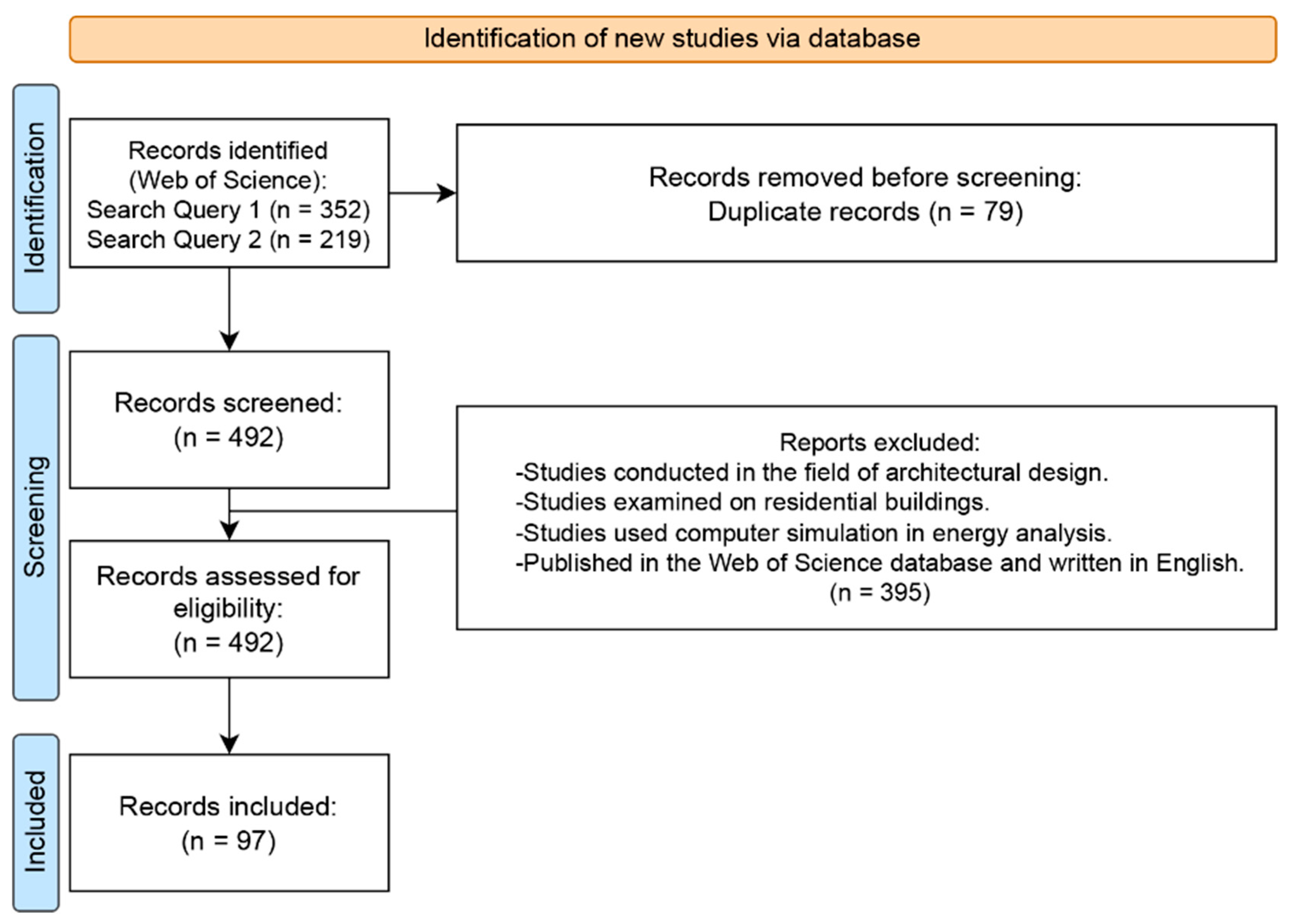
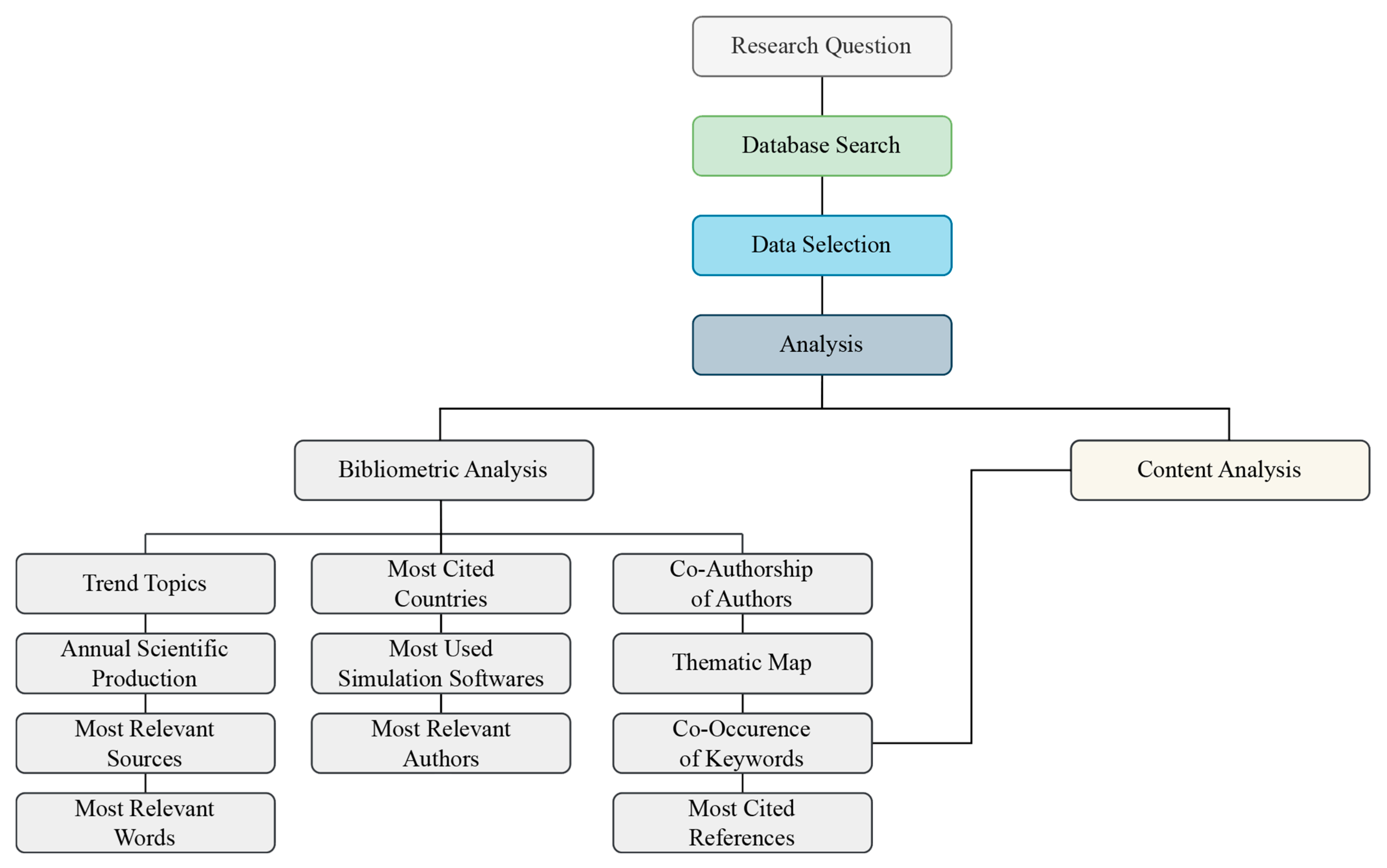


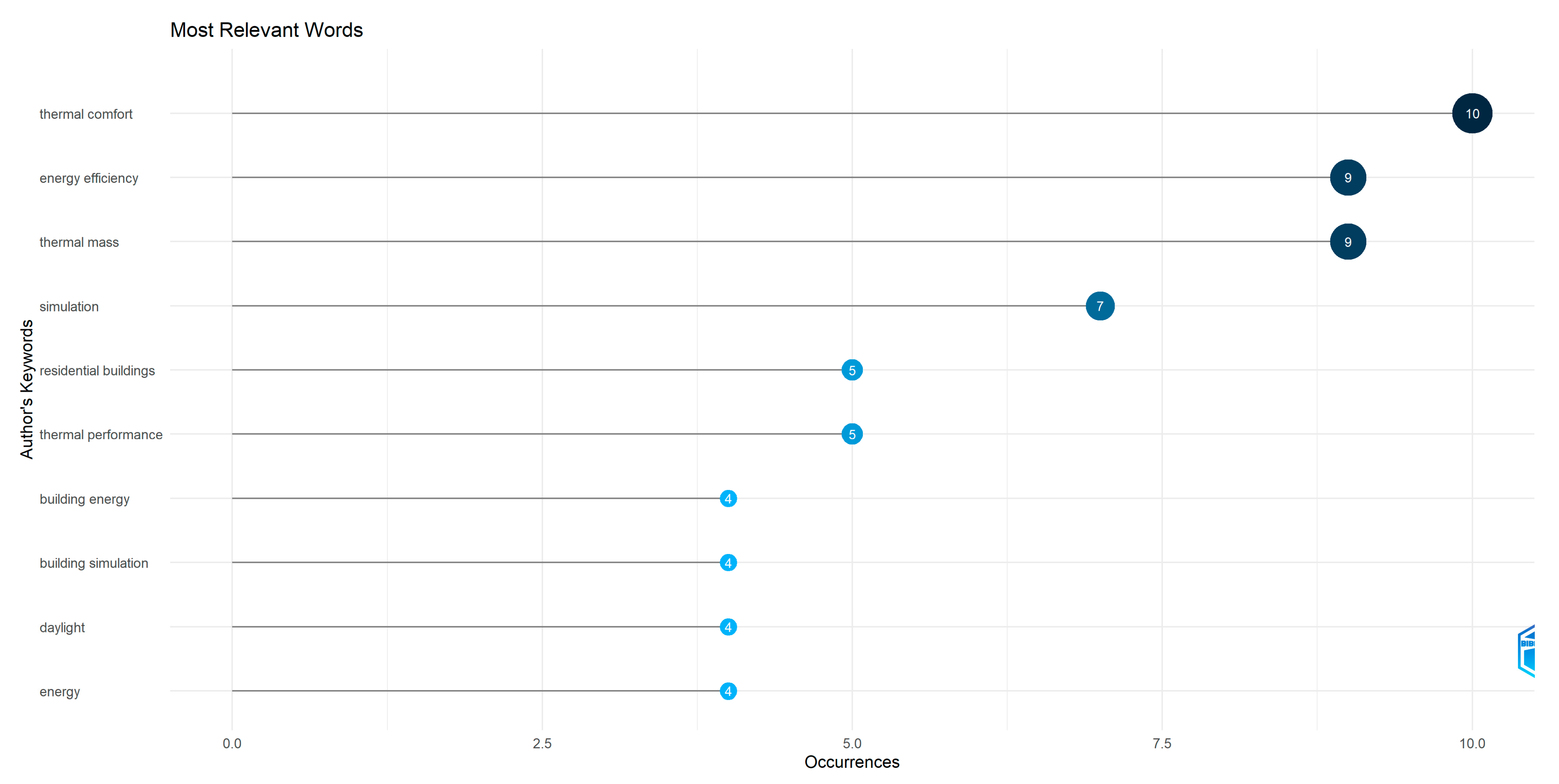
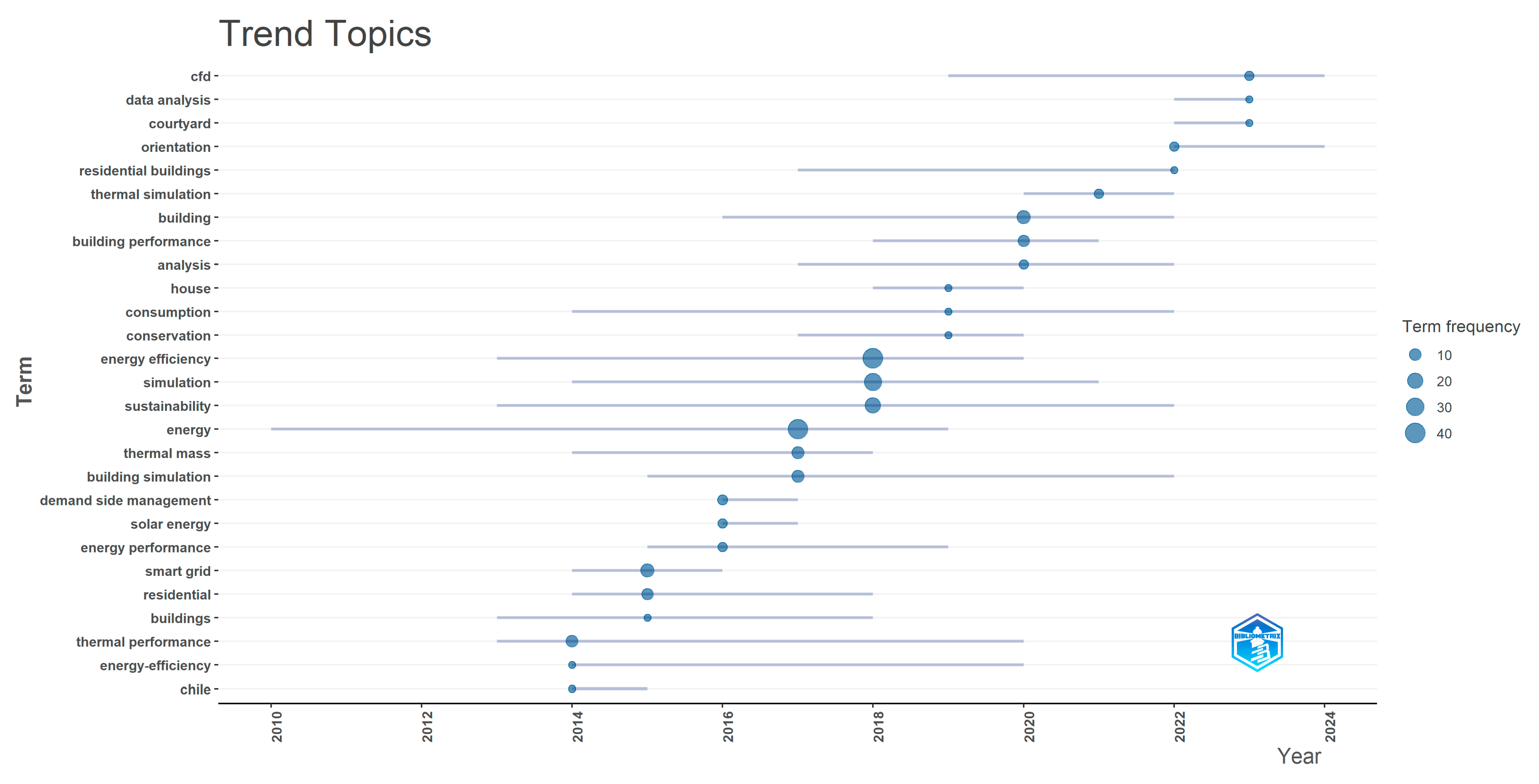
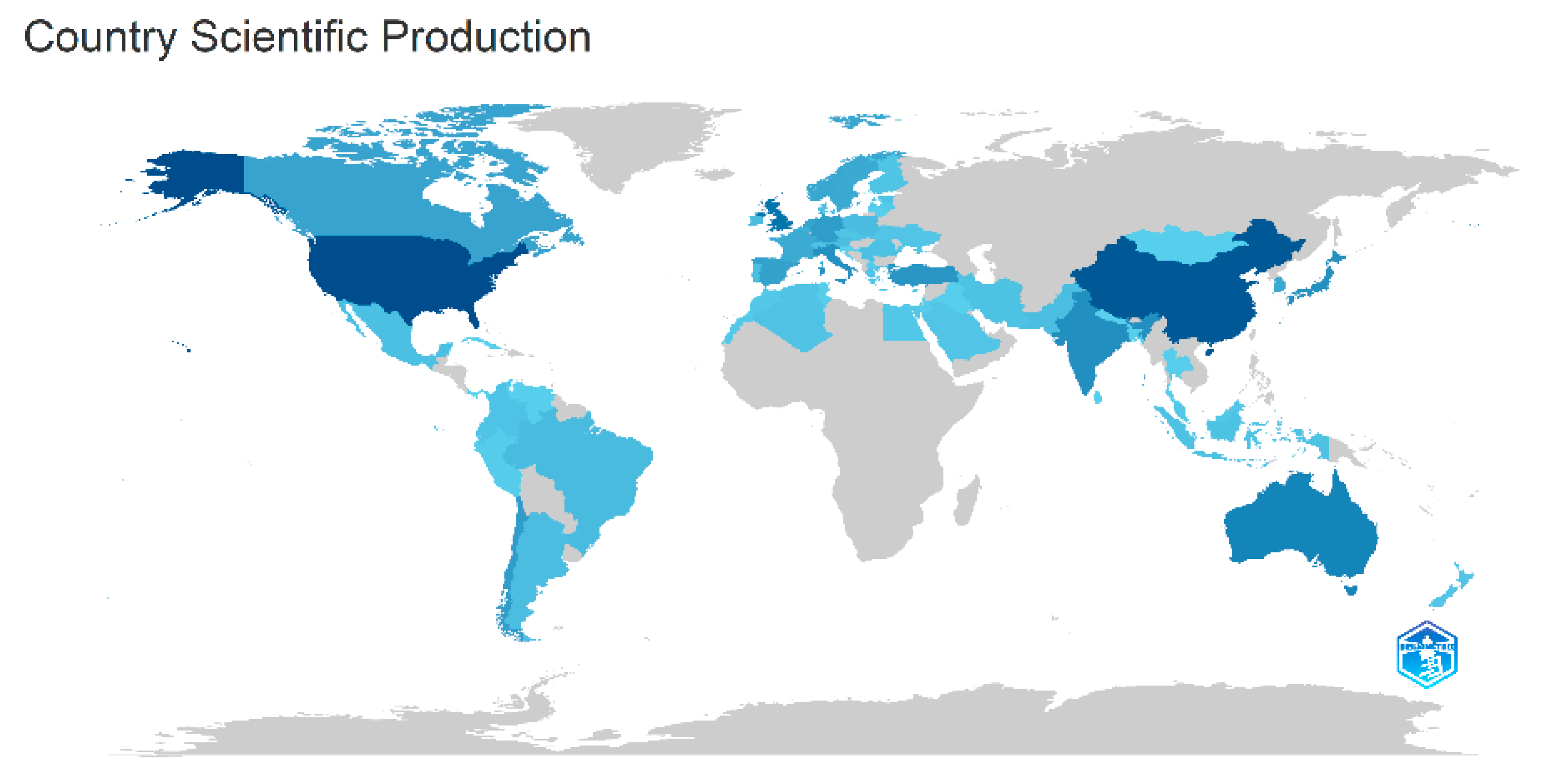

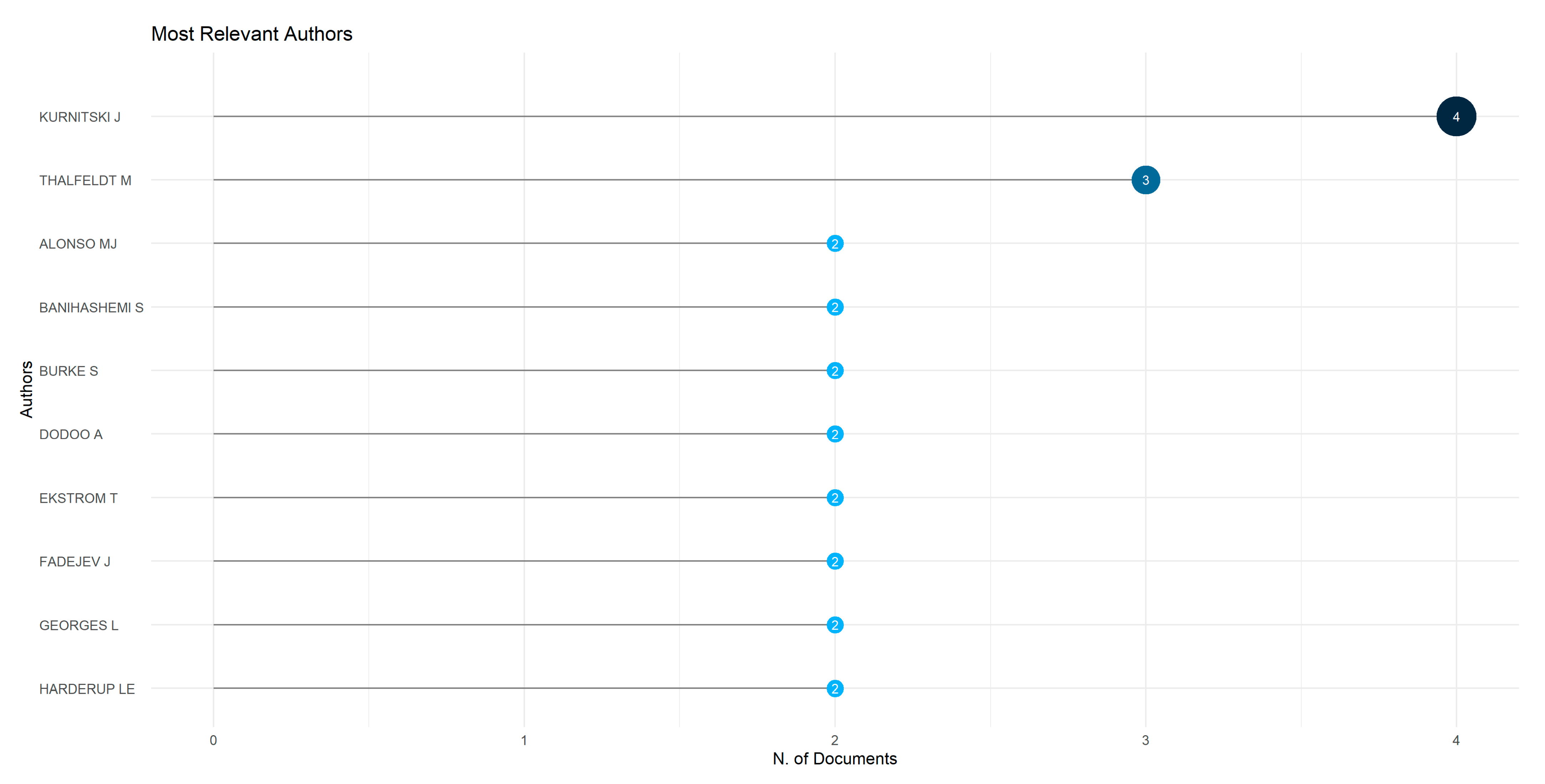
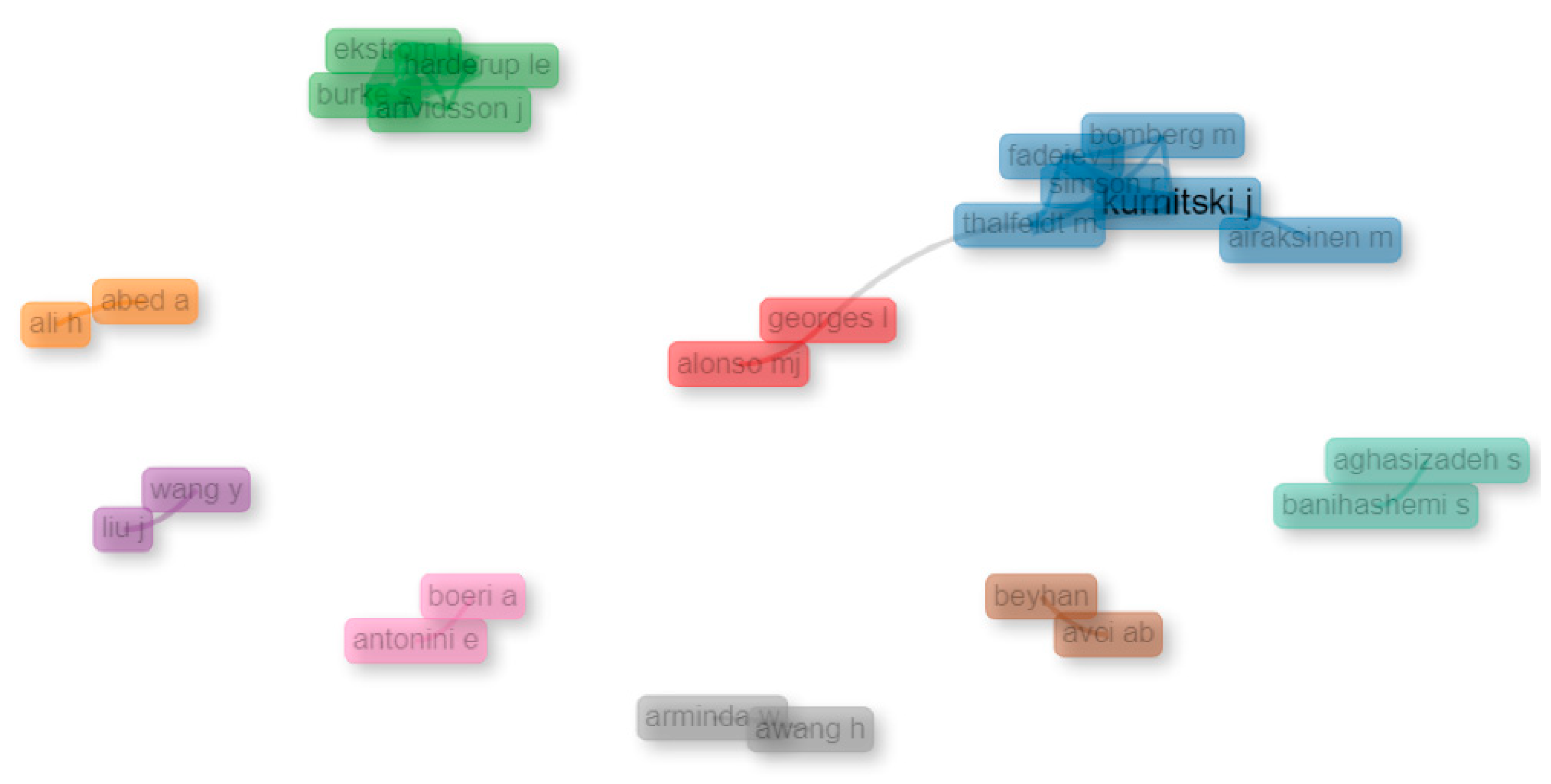
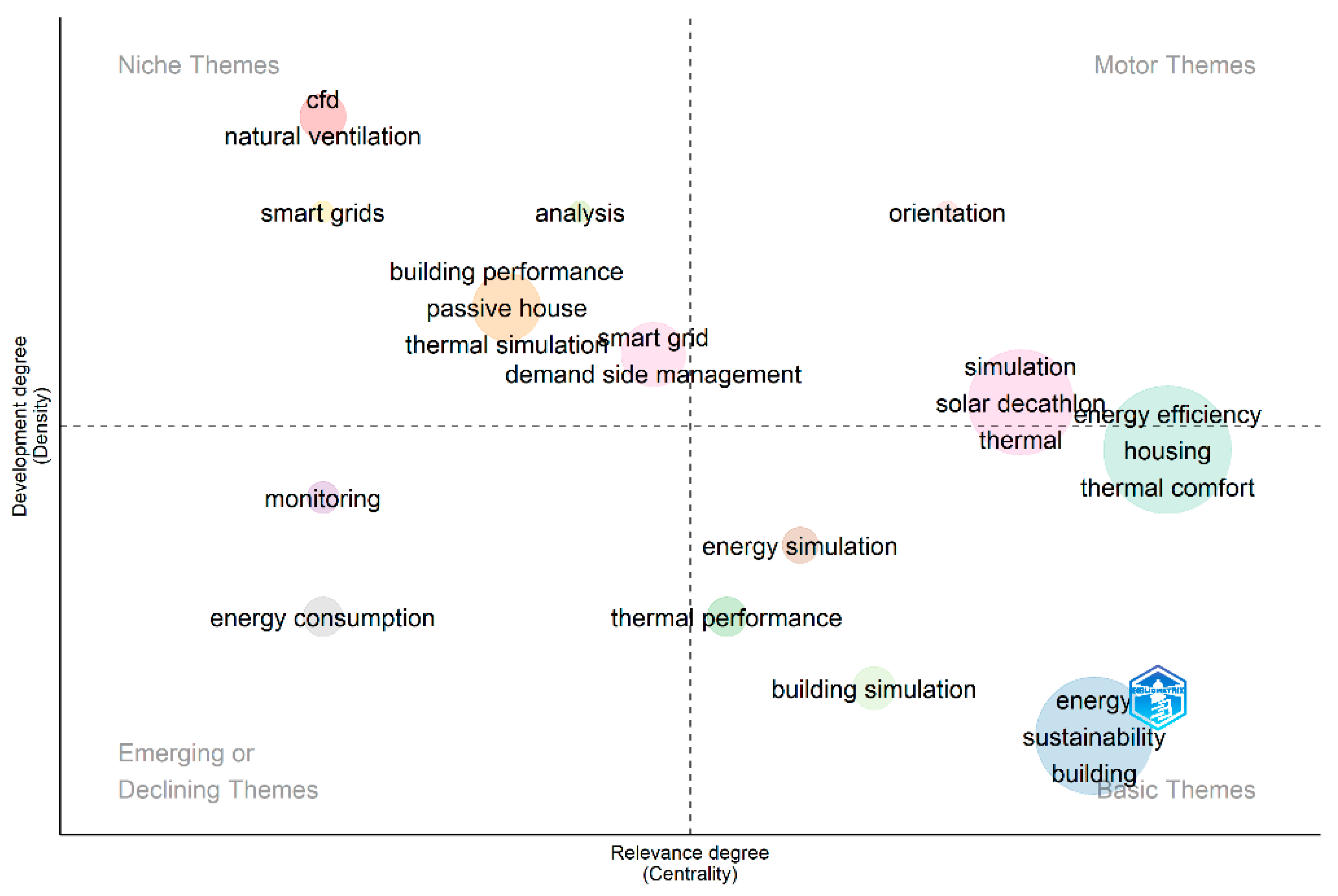


| Database | Web of Science (April 2024) |
|---|---|
| Search | -energy analysis (Topic) AND hous* (Topic) AND Architecture (Web of Science Categories) -energy simulation (Topic) AND hous* (Topic) AND Architecture (Web of Science Categories) |
| Time Period | No Restriction |
| Search Categories | Architecture |
| Document Type | Proceeding Paper, Article, Book Chapters, Review Article |
| Language | English |
| Country | Citation | |
|---|---|---|
| 1 | Germany | 592 |
| 2 | USA | 525 |
| 3 | Peoples R. China | 355 |
| 4 | U. Arab Emirates | 250 |
| 5 | Australia | 164 |
| 6 | England | 117 |
| 7 | Canada | 112 |
| 8 | Switzerland | 96 |
| 9 | Japan | 82 |
| 10 | Turkiye | 65 |
| Cited Reference | Number of Citations | |
|---|---|---|
| 1 | Nguyen At, 2014 [31] | 10 |
| 2 | Crawley Db, 2008 [32] | 8 |
| 3 | De Wılde P, 2014 [33] | 8 |
| 4 | Pérez-Lombard L, 2008 [34] | 8 |
| 5 | Anna-Marıa V, 2009 [35] | 7 |
| 6 | Grıego D, 2012 [36] | 7 |
| 7 | Roudsarı Ms, 2013 [37] | 7 |
| 8 | Bustamante W., 2009 [38] | 6 |
| 9 | Caetano I, 2020 [39] | 6 |
| 10 | Coakley D, 2014 [40] | 6 |
| Cluster | Keywords |
|---|---|
| 1 | Building Envelope |
| Building Simulation | |
| Climate Change | |
| Residential Buildings | |
| Solar Energy | |
| 2 | Energy Simulation |
| Solar Decathlon | |
| Thermal Mass | |
| 3 | Monitoring |
| Simulation | |
| Thermal Performance | |
| 4 | Building Energy |
| Daylight | |
| 5 | Building Performance |
| Energy Efficiency | |
| 6 | Energy Conservation |
| Thermal Comfort |
| Reference | Cluster | Theme | Simulation Tool | Analysis | ||||||
|---|---|---|---|---|---|---|---|---|---|---|
| 1 | 2 | 3 | 4 | 5 | 6 | 1 | 2 | |||
| [81] | ● | ● | Designbuilder | Heating, Cooling, CO2 | ||||||
| [82] | ● | ● | Designbuilder | Daylight | ||||||
| [72] | ● | ● | Ecodesigner, Firstrate5 | Thermal Load | ||||||
| [83] | ● | ● | ● | Designbuilder | - | |||||
| [75] | ● | ● | Energy+ | Heating, Cooling | ||||||
| [66] | ● | ● | Beopt | Heating, Cooling | ||||||
| [84] | ● | ● | Ies Ve | CO2 | ||||||
| [67] | ● | ● | Revit | Daylight | ||||||
| [85] | ● | ● | Designbuilder | Thermal Comfort | ||||||
| [69] | ● | ● | Designbuilder | Thermal Load | ||||||
| [43] | ● | ● | Valentine | Heating, Cooling | ||||||
| [53] | ● | ● | Pleiades | Thermal Load | ||||||
| [44] | ● | ● | Ida-Ice | CO2 | ||||||
| [86] | ● | ● | Designbuilder | Heating, Cooling | ||||||
| [50] | ● | ● | Gene Arch | Heating, Cooling, Lighting | ||||||
| [87] | ● | ● | Grasshopper, Dynamo | Daylight, Thermal Load | ||||||
| [88] | ● | ● | Trnsys | Thermal Load | ||||||
| [58] | ● | ● | ● | Energy+, Heliodon, Analysis Bio | Thermal Comfort | |||||
| [59] | ● | ● | Codyba | Thermal Comfort | ||||||
| [89] | ● | ● | Nathers | Thermal Comfort | ||||||
| [51] | ● | ● | ● | Rhino, Envi-met | Thermal Comfort | |||||
| [90] | ● | ● | Energy+ | Heating | ||||||
| [70] | ● | ● | ● | Ida-Ice | Thermal Load | |||||
| [74] | ● | ● | ● | Ida-Ice | Heating, Cooling | |||||
| [60] | ● | ● | ● | Ida-Ice | Heating, Cooling | |||||
| [91] | ● | ● | Designbuilder | Thermal Load | ||||||
| [92] | ● | ● | Ecotect | Heating | ||||||
| [56] | ● | ● | Designbuilder, Energy+, Revit | Thermal Load | ||||||
| [93] | ● | ● | Ida-Ice | Thermal Comfort | ||||||
| [42] | ● | ● | Designbuilder | CO2 | ||||||
| [49] | ● | ● | Ies Ve | Thermal Load | ||||||
| [65] | ● | ● | Vip Energy | Daylight | ||||||
| [62] | ● | ● | Revit | Thermal Comfort | ||||||
| [94] | ● | ● | ● | Energy+ | Thermal Load | |||||
| [63] | ● | ● | ● | Trnsys, Energy+ | Heating, Cooling | |||||
| [76] | ● | ● | Energy+ | Thermal Load | ||||||
| [80] | ● | ● | Primero, Energy+ | GHG | ||||||
| [95] | ● | ● | Phpp | Thermal Comfort | ||||||
| [79] | ● | ● | Ies Ve | Thermal Comfort | ||||||
| [41] | ● | ● | Open Studio, Energy+ | Thermal Load | ||||||
| [96] | ● | ● | Htb2 | Thermal Load | ||||||
| [97] | ● | ● | Energy+ | Heating, CO2 | ||||||
| [45] | ● | ● | Ies Ve | Heating, Cooling, CO2 | ||||||
| [78] | ● | ● | Ecotect | Thermal Comfort | ||||||
| [98] | ● | ● | Matlab | Thermal Comfort | ||||||
| [99] | ● | ● | ● | Designbuilder | Thermal Comfort | |||||
| [100] | ● | ● | Phpp | Heating | ||||||
| [101] | ● | ● | Therb | Heating, Cooling | ||||||
| [102] | ● | ● | Thermo Render Pro | Heating, Cooling | ||||||
| [103] | ● | ● | Bredem | Thermal Load | ||||||
| [104] | ● | ● | ● | Designbuilder | Thermal Load | |||||
| [105] | ● | ● | Designbuilder | Thermal Load | ||||||
| [68] | ● | ● | Grasshopper | Heating, Cooling | ||||||
| [55] | ● | ● | Visualdoe | Heating, Cooling | ||||||
| [106] | ● | ● | ● | Designbuilder | Heating | |||||
| [107] | ● | ● | Designbuilder | Thermal Load, CO2 | ||||||
| [108] | ● | ● | Wufi | Heating, Cooling | ||||||
| [109] | ● | ● | ● | Trnsys | Heating, Cooling | |||||
| [110] | ● | ● | Ida-Ice | CO2 | ||||||
| [111] | ● | ● | Energy+ | Heating, Cooling | ||||||
| [112] | ● | ● | Bsim | Thermal Comfort | ||||||
| [113] | ● | ● | Wufi | Thermal Comfort | ||||||
| [114] | ● | ● | ● | Energy+ | Thermal Load | |||||
| [115] | ● | ● | Trnsys | Thermal Load | ||||||
| [116] | ● | ● | Ida-Ice | - | ||||||
| [64] | ● | ● | ● | Energy+ | Thermal Comfort | |||||
| [61] | ● | ● | ● | Designbuilder | Heating | |||||
| [52] | ● | ● | Energy+ | Thermal Load | ||||||
| [47] | ● | ● | ● | Ecotect | Thermal Comfort | |||||
| [71] | ● | ● | Ida-Ice | Heating | ||||||
| [117] | ● | ● | Ies Ve | Heating, Cooling | ||||||
| [118] | ● | ● | Designbuilder | Daylight | ||||||
| [119] | ● | ● | Designbuilder | Heating, Cooling | ||||||
| [120] | ● | ● | E-quest | Thermal Load | ||||||
| [48] | ● | ● | Lightstanza | Daylight | ||||||
| [121] | ● | ● | Grasshopper | Thermal Comfort | ||||||
| [122] | ● | ● | Energy+ | - | ||||||
| [123] | ● | ● | Ies Ve | Cooling | ||||||
| [124] | ● | ● | Vip Energy | Heating | ||||||
| [54] | ● | ● | Ida-Ice | Heating | ||||||
| [125] | ● | ● | Designbuilder | Thermal Comfort | ||||||
| [126] | ● | ● | Designbuilder | Thermal Load | ||||||
| [77] | ● | ● | Trnsys | Thermal Comfort, Cooling | ||||||
| [127] | ● | ● | Designbuilder | - | ||||||
| [57] | ● | ● | ● | Modelica | Heating, Cooling | |||||
| [128] | ● | ● | Ies Ve | Thermal Load | ||||||
| [129] | ● | ● | Designbuilder | Thermal Comfort | ||||||
| [130] | ● | ● | Thermo Render Pro | - | ||||||
| [131] | ● | ● | Wufi | Thermal Load | ||||||
| [132] | ● | ● | Ecotect | Lighting, Ventilation | ||||||
| [46] | ● | ● | ● | Ida-Ice | Heating, Cooling | |||||
| [133] | ● | ● | Energy+ | Thermal Load, Daylight | ||||||
| [134] | ● | ● | ● | Grasshopper | Thermal Load | |||||
| [135] | ● | ● | Designbuilder | Heating | ||||||
| [136] | ● | ● | Energy+ | Thermal Load | ||||||
| [73] | ● | ● | Teac, Energy+ | GHG | ||||||
| 1 | Location | Determination of the study area. |
| Environmental data Climate data | The study area determines the environmental data at this stage. | |
| 2 | Typology | Analyzing the typology of the building. |
| Block layout Detached layout Apartment | Typology affects parameters such as the form of buildings and their relationship with each other. The variations exemplified here can be further multiplied. | |
| 3 | Scale | Determining the scope in which the building will be approached. |
| Housing scale Scale between housing units Neighborhood scale | The accurate determination of the analysis scale is crucial for selecting the appropriate simulation type and ensuring the reliability of the results. The simulation to be employed will be selected based on the building form, environmental data, and typology. | |
| 4 | Phase | Defining the stage of intervention in the building. |
| Use Early design Retrofit | Properly defining the phase to be analyzed is essential for choosing the simulation type and ensuring reliable results. | |
| 5 | Materials-Equipment | Defining the systems and materials used in the building. |
| Building envelope HVAC Shading Domestic hot water | The structural elements have a direct impact on the simulation outcomes. To achieve an effective result, these systems must be accurately defined. The examples provided here can be expanded. | |
| 6 | Target | Determining the target of the obtained data for the result of the analysis. |
| Energy savings Design optimization Comfort | Determining the study’s objective is essential for selecting the type of analysis to be performed. Selecting the appropriate type of analysis and providing justification will enhance the accuracy of the results. | |
| 7 | Simulation Scope | Determining the scope of the simulation. |
| Existing situation analysis Generate scenarios Genetic algorithm | Determining the simulation method according to the study content will enhance the reliability of the study. | |
| 8 | Analysis Period | Determining the simulation period. |
| Annual/monthly Daily/hourly Design day | The determination of the analysis period narrows the scope of the results, enables clear outcomes, and also plays a role in the selection of the software to be used. | |
| 9 | Software and Analysis | Determination of the software and simulation type. |
| DesignBuilder EnergyPlus IES VE | Sufficient data have been collected to select the most appropriate software and analysis for the study’s context and objectives. The energy unit in which the results will be presented should be clearly specified at this stage. |
Disclaimer/Publisher’s Note: The statements, opinions and data contained in all publications are solely those of the individual author(s) and contributor(s) and not of MDPI and/or the editor(s). MDPI and/or the editor(s) disclaim responsibility for any injury to people or property resulting from any ideas, methods, instructions or products referred to in the content. |
© 2024 by the authors. Licensee MDPI, Basel, Switzerland. This article is an open access article distributed under the terms and conditions of the Creative Commons Attribution (CC BY) license (https://creativecommons.org/licenses/by/4.0/).
Share and Cite
Sağdıçoğlu, M.S.; Yenice, M.S.; Tel, M.Z. The Use of Energy Simulations in Residential Design: A Systematic Literature Review. Sustainability 2024, 16, 8138. https://doi.org/10.3390/su16188138
Sağdıçoğlu MS, Yenice MS, Tel MZ. The Use of Energy Simulations in Residential Design: A Systematic Literature Review. Sustainability. 2024; 16(18):8138. https://doi.org/10.3390/su16188138
Chicago/Turabian StyleSağdıçoğlu, Mert Sercan, M. Serhat Yenice, and M. Zübeyr Tel. 2024. "The Use of Energy Simulations in Residential Design: A Systematic Literature Review" Sustainability 16, no. 18: 8138. https://doi.org/10.3390/su16188138
APA StyleSağdıçoğlu, M. S., Yenice, M. S., & Tel, M. Z. (2024). The Use of Energy Simulations in Residential Design: A Systematic Literature Review. Sustainability, 16(18), 8138. https://doi.org/10.3390/su16188138








